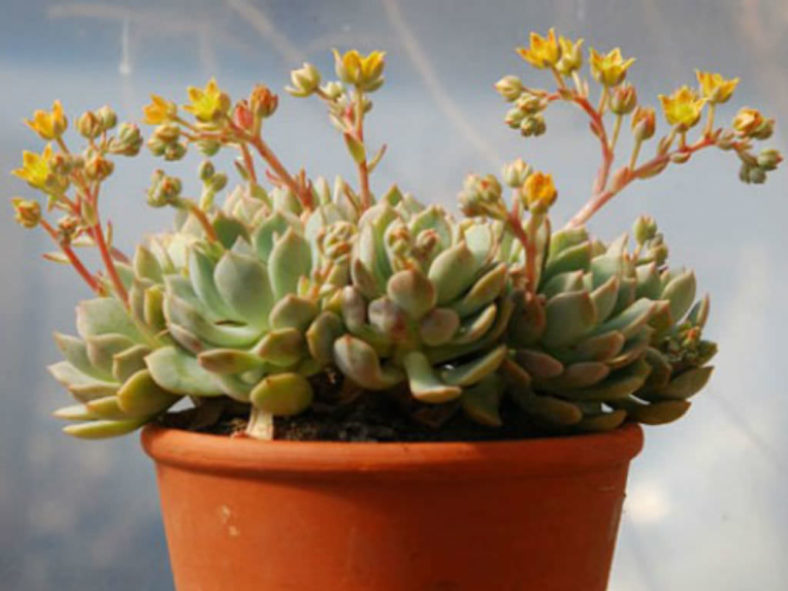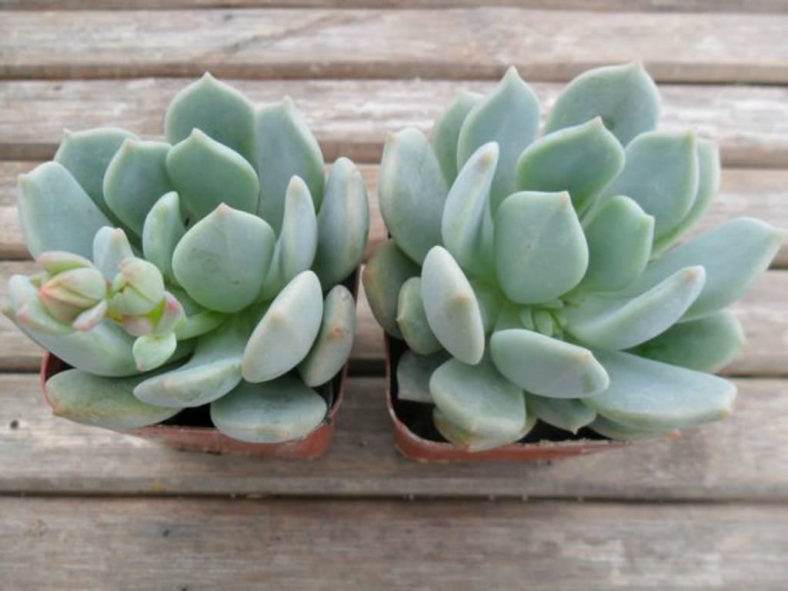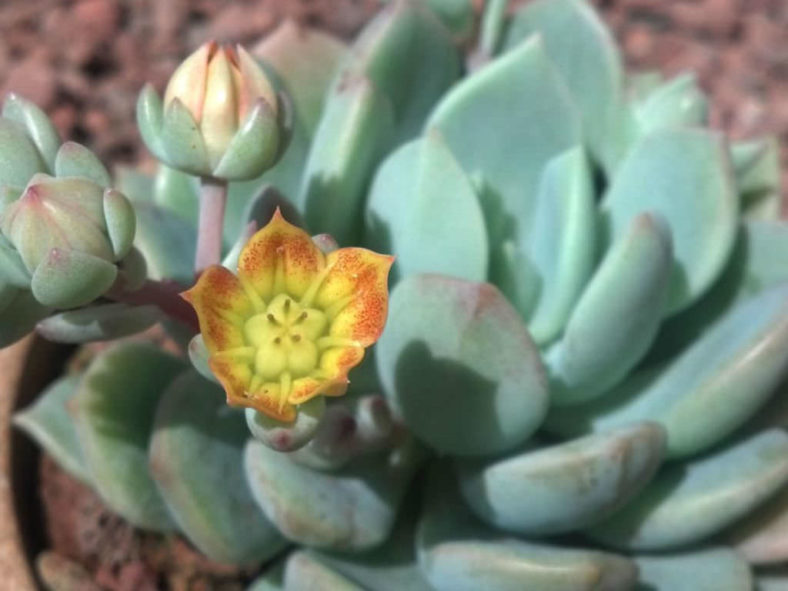Scientific Name
×Graptoveria 'Moonglow'
Synonym(s)
Echeveria 'Moonglow'
Scientific Classification
Family: Crassulaceae
Subfamily: Sempervivoideae
Tribe: Sedeae
Nothogenus: ×Graptoveria
Origin
×Graptoveria 'Moonglow' is an intergeneric hybrid of unknown parentage.
Description
×Graptoveria 'Moonglow' is an attractive succulent that forms rosettes of thick, fleshy, milky aquamarine leaves that often have hues of pink at the tips. The rosettes can grow 10 inches (25 cm) in diameter and produce offsets, forming a tight clump over time.
The flowers are bell-shaped, upward-facing, golden-yellow, and appear on short branches in late winter and early spring.

How to Grow and Care for ×Graptoveria 'Moonglow'
Hardiness: USDA hardiness zones 10a to 11b: from 30°F (-1.1°C) to 50°F (10°C).
The rules for Graptopetalum care are similar to those for most succulents. Container-bound plants thrive in a mixture of peat, sand or other grit, topsoil, and a little compost. Full sun is best, but they will grow in partial sun with slightly rangy results.
Graptopetalums need excellent drainage and moderate water. You can tell when to water by sticking your finger in the soil. Water the plant if the soil is dry several inches down, or the fleshy leaves look shriveled. Overwatering is a cause of root rots, and the plant can get several pest infestations.
These succulents are generally easy to propagate from seeds, leaf cuttings, or offsets. Any rosette that breaks off can root and start a new plant. Even a leaf that drops off will quickly root below the parent plant and produce a new rosette. The new plant feeds off the leaf until it shrivels and falls off. The new little ghost plant had rooted and sprouted new leaves by then.
Learn more at How to Grow and Care for Graptopetalum.
Links
- Back to nothogenus ×Graptoveria
- Succupedia: Browse succulents by Scientific Name, Common Name, Genus, Family, USDA Hardiness Zone, Origin, or cacti by Genus
Photo Gallery
Click on a photo to see a larger version.

